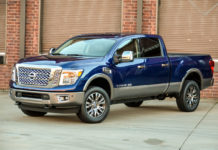Upscale brands like BMW (BMWG.DE), Saab, and others are cutting back on leasing for some of the same reasons Chrysler quit leasing outright, effective Aug. 1. Ford Motor (NYSE:F – News) and General Motors (NYSE:GM – News) have also said they are taking incentive money out of leasing and putting it toward cut-rate loans and cash rebates.
Leasing is more important to luxury brands, having helped finance a luxury-car boom since the early 1990s. Luxury leases will still be available, but as discounts on new leases go down, monthly payments and down payments on leases will go up.
Most-Leased Car: BMW
“We are still very committed to the leasing business,” said Daniel DeChristopher, vice-president for sales and marketing at BMW Group Financial Services. Four out of the top 10 most commonly leased vehicles in the U.S. auto industry are BMWs, according to J.D. Power & Associates' Power Information Network (PIN). (Like BusinessWeek.com, J.D. Power is a unit of The McGraw-Hill Companies (NYSE:MHP – News).)
Nevertheless, through Sept. 2, in addition to leases, BMW is offering 0.9% APR loans on almost its entire 2008 lineup, to make room for 2009 models.
“There's an amount of risk involved (in leases) where we see the used-car market. We're a little more exposed. We certainly remain committed to leasing, but we are trying to shift,” DeChristopher said.
BMW is more than a little exposed to leasing. According to PIN data, the flagship BMW 7 Series sedan (BusinessWeek.com, 4/16/07) is No. 1 on the list of most leased vehicles, at 85.3% lease penetration. That is, 85.3% of the 7 Series customers from Jan. 1 through Aug. 10 leased their cars. The rest took out a loan or paid cash.
That's an extraordinarily high percentage of leasing, compared to industry standards. For the whole U.S. industry, leasing accounted for only about 19.7% of retail volume in July vs. 53.8% loans and 26.5% cash. The “cash” category includes all buyers who paid outright for their car. That includes some who may have gotten a loan someplace other than the dealership, like a credit union or a home equity loan.
When You Can't Afford to Buy It
This is the way leasing works: The customer in effect borrows the difference between the up-front cost of the vehicle, minus what it's worth at the end of the lease, usually called the residual value. Obviously, that yields a lower monthly payment than having to borrow the entire cost of the vehicle.
Leasing is attractive for more expensive, aspirational brands, where customers may want to stretch their budget to obtain a pricier car than they would normally buy, if they had to buy it outright.
“There are always going to be people who need to lease,” said Jesse Toprak, executive director of industry analysis for Edmunds.com.
Leasing is also attractive for the car companies and their dealers because it brings people back to the dealership for service, to turn in their car at the end of the lease, and for another new vehicle.
John Blair, CEO of Automotive Lease Guide, said he couldn't imagine luxury brands doing without leasing. ALG, based in Santa Barbara, Calif., maintains a commonly used industry benchmark for setting residual values.
“They might not be as aggressive, and payments may go up a little bit, but it's such a main part of the selling strategy for luxury vehicles. I don't see how they could abandon leasing and expect to do any volumes,” he added.
Inflating Residual Values
Setting the residual value is where leasing gets tricky. The residual value, which is set ahead of time and specified in the customer's leasing contract, is an estimate of how much the car or truck will be worth at the end of the lease — say, in 36 or 48 months.
At the end of the lease, a customer has three options. He can extend the lease, purchase the vehicle, or simply turn it in, which is what most people do. At that point, the dealer may opt to buy the off-lease vehicle and resell it as a used car — often as a certified pre-owned car, with a factory-backed warranty.
BMW was a pioneer in promoting leasing starting in the early 1990s. At the same time, BMW was also one of the first brands to promote certified pre-owned cars, to support the value of off-lease cars, and to motivate BMW dealers to take more off-lease vehicles off BMW's hands.
“We almost see leasing as a CRM (customer relationship management) tool, having a customer coming back on a regular basis, the way we work the whole process, from the new car, to the relationship during the lease, to the used car,” said DeChristopher of BMW Financial.
Across the industry, most off-lease vehicles end up back at the leasing company. The leasing company resells the off-lease vehicles at a wholesale, used-car auction. If the actual value of the off-lease vehicle is the same as the forecast residual value, that's the end of the story.
But the car companies and auto lenders often artificially inflate the predicted residual value. That lowers the monthly payments, because the customer is financing only the difference between the up-front cost and the residual value. For luxury brands, hiking the residual value is also seen as less damaging to the brand image than Detroit-style customer cash rebates.
The car companies set aside reserves to cover the expected loss from the difference between the inflated residual value and the actual value of the off-lease vehicle. They get into trouble, especially in the cases of Chrysler, Ford and GM, when the actual value of the off-lease vehicle falls substantially. That creates a bigger-than-expected loss on the residual value.
Plunging Resale Values
That's what happened with trucks this year, when gas prices hit $4 per gallon. Auction prices for used, full-size pickups were down 22.9% in July from the year-ago month; full-size SUVs were down 24.4% and luxury SUVs down 13.3%, according to auction firm ADESA of Carmel, Ind.
Those drops forced Ford last month to write down $2 billion from the value of its lease portfolio in the second quarter. GMAC Financial Services took a similar writedown of $716 million for the second quarter. Chrysler is privately held and doesn't disclose its financials, but it's safe to say that big losses on residuals helped motivate Chrysler to drop leasing entirely.
“Ford and Chrysler are pretty much getting out of the leasing business. GM is still in it, and leasing is still available for luxury and midline imports,” said Charles Oglesby, CEO of Asbury Automotive Group (NYSE:ABG – News), one of the nation's largest dealership chains.
He said resale values are dropping so fast for big trucks that the car companies have started programs to encourage customers to turn in their leased trucks early, before the values get any worse.
“Particularly on the heavier vehicles, there's been such a drop in (residual values), they're being proactive to get people out of them now, rather than wait 15 or 18 months from now,” he said.
Looking for Cover
The mass-market shakeout has the luxury brands rethinking leasing, too.
At BMW Financial, more than 70% of off-lease vehicles are returned, according to an October 2007 filing with the Securities & Exchange Commission. In 2006, the last full year for which numbers were available, BMW had close to 100,000 vehicles coming off-lease, the filing said. That's a big potential liability.
GM has said that while it will continue to offer leases, it is not going to put incentives behind them. Of the 10 most leased vehicles in the U.S., the Saab 9-7X is the only GM product, at 82.2% leases, according to PIN.
Kevin Frayne, marketing manager for SUVs and crossovers at Saab Automobile USA, said that as residual values have fallen for traditional truck frame-based SUVs like the 9-7X, it's gotten to be too expensive for GM to support discount leases.
Without incentives, and with lower residual values, he said monthly lease payments would go up “a couple hundred bucks.” On the other hand, during the 2008 model year clearance, GM is offering up to $12,000 in incentives to buy a 9-7X.
“Maybe folks were used to going out and leasing for X number of dollars per month, and getting something that was more expensive than they would normally buy. They can still get in for X per month, but it's going to be on a five- or six-year loan, instead of a three-year lease,” he said.








